Orchard & vineyard confined spaces
Confined spaces on orchards and vineyards can be dangerous. Employers and workers must understand the hazards and know how to work with them before entering the confined space.
The hazards
Below, you'll find general information to help you assess the hazards of confined spaces on orchards and vineyards. Please note: there may be confined spaces on your farm that are not listed here.
Storage tanks hold potable and gray water for washing and chilling fruit during sorting and packaging. Normally, hazardous gases won't be present in a water tank — as long as the water is clean. However, a biofilm can form inside the tank. Some cleaning and disinfecting chemicals can produce very toxic gases, even in small amounts. Low-oxygen conditions may also occur if the tank has been empty for a while.
With storage tanks, the greatest risk is from drowning, which can occur in as little as 15 cm of water.
| Hazards | Hazardous work |
|
|
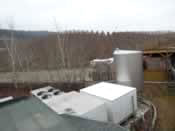
Wash-water storage tanks (square) and rain-water storage tank (round)
If there's not enough ventilation, crawl spaces or cellars may contain a toxic or low-oxygen atmosphere. The combination of metal and moisture can deplete oxygen because oxygen is used as metal rusts. Other toxic gases may also accumulate, depending on the use of the building above the crawl space or material being stored in the crawl space.
| Hazards | Hazardous work |
|
|
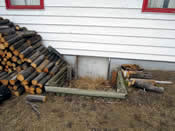 |
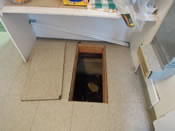 |
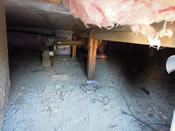 |
| Exterior crawl space entrance |
Interior crawl space entrance |
Crawl space |
Irrigation pump stations draw water from surface sources such as ditches, streams, ponds, or lakes. The water source may be flowing or stagnant. The bottom of stagnant water sources can contain accumulated sludge.
On some farms, water enters into chambers in the pump station, where there's a pump intake or pipes leading to the intake. The pump station may have additional chambers for directing water flow.
On other farms, the pump — and sometimes the pump station building — sit above the water, isolated from the boundaries containing the water.
| Hazards | Hazardous work |
|
|
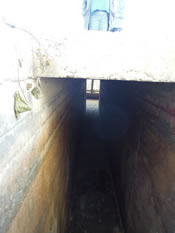 |
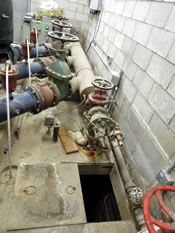 |
| Influent channel | Influent chamber |
Mobile sprayers on orchards and vineyards are usually tank wagons or trailers. If the tanks can be entered, these may be considered confined spaces.
Tanks can contain vapours from fertilizer or pesticide solutions. Some are toxic and can cause injury or death when inhaled at high concentrations. Also, low-oxygen conditions can occur if the tank has been empty for a while. Interior surfaces are likely to be very slippery, making it difficult to leave the space.
On some units, the power take-off of the tractor powers mechanical equipment. The tractor's hydraulic system powers the unit's hydraulic system. On other units, the tractor's engine powers mechanical movement and the hydraulic system. It is possible for energy to remain in circuits after the tractor has been shut down and linkages and hoses have been disconnected. Unexpected releases of stored energy cause many serious and fatal injuries.
| Hazards | Hazardous work |
|
|
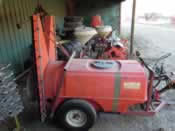 |
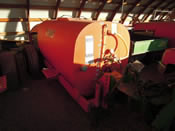 |
Mobile sprayers
Some orchards contain mechanical equipment for handling fruit. Structures within the equipment, such as enclosed conveyors, bins, and hoppers, may be considered confined spaces. Piping and support structures may create a void space below the main deck of the equipment.
Conveyors transport solid material from a bin to processing or transport, or from processing to storage or transport. The enclosures around augers and conveyors are considered confined spaces. Augers and conveyors that are not enclosed contain moving equipment, such as rollers and belts, that could pose a risk.
| Hazards | Hazardous work |
|
|
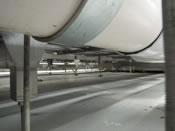 |
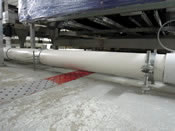 |
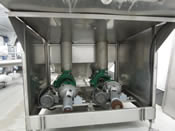 |
| Machinery void spaces | Machinery space | |
Refrigeration preserves fruit during sorting, packaging, storage, and transport. Refrigeration uses water baths during sorting and handling and in coolers during storage. Refrigeration systems use various refrigerants and fluids for heat transfer. Systems may have a centralized compressor room with compressors or modular units.
Void spaces under fan cooler units and heat exchange tanks may be considered confined spaces.
| Hazards | Hazardous work |
|
|
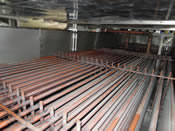 |
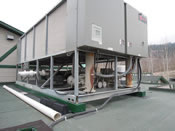 |
| Heat exchanger tank | Fan cooler void space |
Orchards and vineyards in rural areas are not part of municipal sanitary collection systems. In that they may also house guest workers, accommodations must also have standalone sewage treatment facilities, including septic tanks and processing chambers.
Treating wastewater can produce toxic gases and lower the oxygen levels in these spaces. Inhaling these toxic gases at high concentrations can quickly cause death.
| Hazards | Hazardous work |
|
|
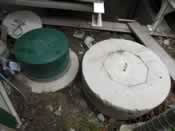 |
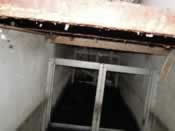 |
| Septic tank | Black-water storage tank |
Sumps are below-ground or below-surface chambers that collect drainage from surface and subsurface sources. When the trap in the outflow pipe overflows, collected water is transferred to another location through the outflow pipe. Some sumps act as separation chambers before discharging to stormwater drainage. Stormwater manholes serve the same function but may not include the separation capability.
Sumps can accumulate organic matter in run-off from various sources. Sludge can trap gases from anaerobic digestion. If the sludge is agitated it thins and gases can be released. Fermentation gases are toxic and can quickly cause death when inhaled at high concentrations.
| Hazards | Hazardous work |
|
|
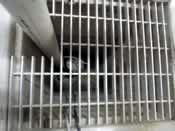
Sump with pump
In a well, a well chamber is an air space that draws surface water. It's often formed from vertical steel or precast concrete culverts. Well chambers contain piping and a pump intake for drawing water to the surface. Well chambers are often located in a building above-ground, and usually considered confined spaces.
Normally, hazardous gases won't be present in a well chamber provided there's very little (or no) organic material or dissolved gas in the water. However, oxygen depletion can occur when metal rusts. This is most likely to occur when the well chamber is closed or undisturbed for a long time and condensation forms on metal surfaces.
| Hazards | Hazardous work |
|
|
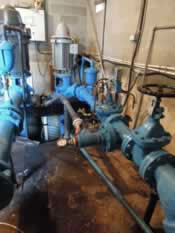 |
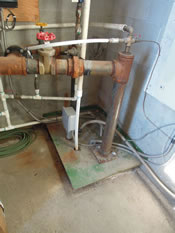 |
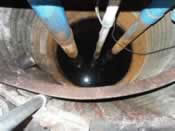 |
Well chambers
The well pit provides access to the well and pumping equipment. It also prevents freeze-up in the pressure tank and piping.
Normally, hazardous gases won't be present in a well provided there's very little (or no) organic material in the water. However, oxygen depletion can occur when metal rusts. This is most likely when the well pit is closed for a long time and condensation forms on metal surfaces.
| Hazards | Hazardous work |
|
|
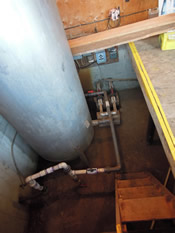 |
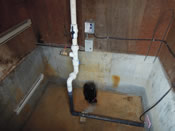 |
Well pits
Highlights
- New risk advisory on the dangers of fire and explosion in asphalt mix plants Published on: August 15, 2023
- New online tool helps workers and employers manage risk by delivering a custom list of health and safety resources Published on: December 05, 2022
- New slide show highlights the importance of protecting workers from the hazards of confined spaces in agriculture Published on: August 29, 2022
- WorkSafeBC visiting B.C. wineries to help employers prepare for seasonal re-opening Published on: May 14, 2021

